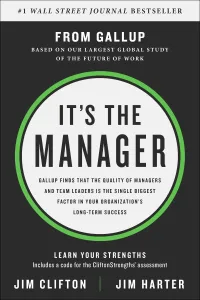Quiet Quitting
This issue about Quiet Quitting will be of particular interest to CEOs, Executives, and Team Leaders
In This Issue:
- Is Quiet Quitting Real?
- What is Employee Engagement, Really?
- Solving the Quiet Quitting Crisis.
- Coach-Based Management.
- Understanding the Employee Manager Relationship.

Highlights of the September 6, 2022 Gallop Workplace Article: "Is Quiet Quitting Real?" by Jim Harter, Gallop’s Chief Scientist, Workplace.
- At least half of the U.S. workforce is quiet quitting
- Managers are essential to combatting quiet quitting
The trend toward quiet quitting -- the idea spreading virally on social media that millions of people are not going above and beyond at work and just meeting their job description -- could get worse.
Many quiet quitters fit Gallup's definition of being "not engaged" at work -- people who do the minimum required and are psychologically detached from their job. This describes half of the U.S. workforce.
Everyone else is either engaged (32%) or actively disengaged (18%). The latter are "loud quitters." Actively disengaged employees tend to have most of their workplace needs unmet and spread their dissatisfaction.
What Is Employee Engagement, Really?
U.S. employee engagement took another step backward during the second quarter of 2022, with the proportion of engaged workers remaining at 32% but the proportion of actively disengaged increasing to 18%, the lowest in almost a decade.
The drop in engagement began in the second half of 2021 and was concurrent with the rise in job resignations. Managers, among others, experienced the greatest drop. The overall decline was especially related to clarity of expectations, opportunities to learn and grow, feeling cared about, and a connection to the organization's mission or purpose -- signaling a growing disconnect between employees and their employers.
Solving the Quiet Quitting Crisis: Focus on Team Leaders
First, address manager engagement. Only one in three managers are engaged at work. Senior leadership needs to reskill managers to win in the new hybrid environment. Also, managers need to create accountability for individual performance, team collaboration and customer value.
In 2019, Jim Harter and Jim Clifton (CEO of Gallop) co-authored the book It’s The Manager based on Gallop’s largest global study of the future of work. That study found that the quality of managers and team leaders is the single biggest factor in an organization’s long-term success.
Harter and Clifton state, “While the world’s workplace has been going through extraordinary historic change, the practice of management has been stuck in time for more than 30 years.” This was about the time the workplace made a shift to the knowledge worker.
The term “knowledge worker” was first coined by Peter Drucker, considered the greatest management thinker ever, in his book, The Landmarks of Tomorrow (1959). Drucker elaborated in an article in 1999, “Knowledge Worker Productivity: The Biggest Challenge” in which he stated, “It demands that we impose the responsibility for their productivity on the individual knowledge workers themselves. Knowledge Workers must manage themselves. They must have autonomy.”
Coach-based Management
In my book, Turning Good People Into Top Talent (2007), I stated that many predict the title “manager” will disappear sometime in the first half of the twenty-first century. My recommendation for the new name for the role we now call manager was “coach.” Unfortunately, most managers are very ineffective coaches.
Clifton and Harter conclude their final chapter by saying, “If you give every team member in your company a great manager—a great coach—one who cares about their development and growth, you have successfully engineered an organization with unlimited potential. It’s the manager.
Action Step for CEOs and Executives
Teach Managers To Successfully Engage, Motivate, And Develop Their People.

Click Here To View A 6-Minute Presentation And Learn More About Coach-Based Management.
